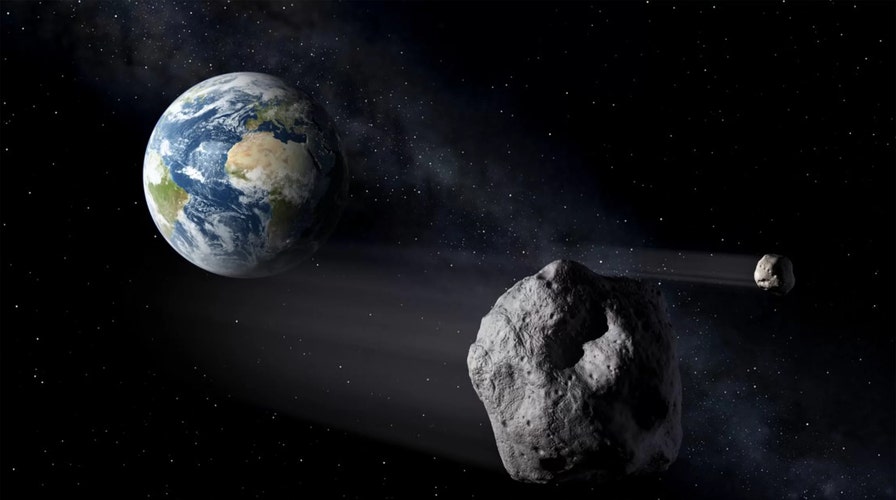Fox News Flash top headlines for March 2
Fox News Flash top headlines are here. Check out what's clicking on Foxnews.com.
Scientists say they have discovered the first known protein that originated in space, located in a meteorite that fell to Earth 30 years ago.
The meteorite, known as Acfer 086, hit Algeria 30 years ago and contains the protein hemolithin. Inside the hemolithin are iron and lithium, two building blocks for life, the researchers said in the study located on the arXiv repository.
"Analysis of the complete spectrum of isotopes associated with each molecular fragment shows 2H enhancements above terrestrial averaging 25,700 parts per thousand (sigma = 3,500, n=15), confirming extra-terrestrial origin and hence the existence of this molecule within the asteroid parent body of the CV3 meteorite class," the study's abstract states. "The molecule is tipped by an iron-oxygen-iron grouping that in other terrestrial contexts has been proposed to be capable of absorbing photons and splitting water into hydroxyl and hydrogen moieties."
POTENTIALLY HAZARDOUS ASTEROID THAT ZIPPED PAST EARTH HAS ITS OWN 'MOON'
Acfer 086 was discovered in 1990 and has a mass of 173 grams, according to The Meteorological Society.
In an interview with ScienceAlert, astronomer and chemist Chenoa Tremblay said it's believed that proteins are "likely to exist in space," but this would be the first evidence of such.
"So we're pretty sure that proteins are likely to exist in space," Tremblay, who was not involved in the study, told ScienceAlert. "But if we can actually start finding evidence of their existence, and what some of the structures and the common structures might be, I think that's really interesting and exciting."
Because the hemolithin in Acfer 086 has a similar structure to proteins on Earth and its ratio of hydrogen to isotope deterium is similar to that seen in the Oort cloud, it's believed it could have formed nearly 4.6 billion years ago, in the proto-solar disk, the Daily Mail reports.
A study was published in October 2019 that suggested the second interstellar object ever discovered, Comet 2I/Borisov, could be carrying water on it from beyond the solar system, releasing water vapor on its journey.
A separate study published in 2018 suggested that cometlike objects could be "ferrying" microbial life across thousands of light-years.





















